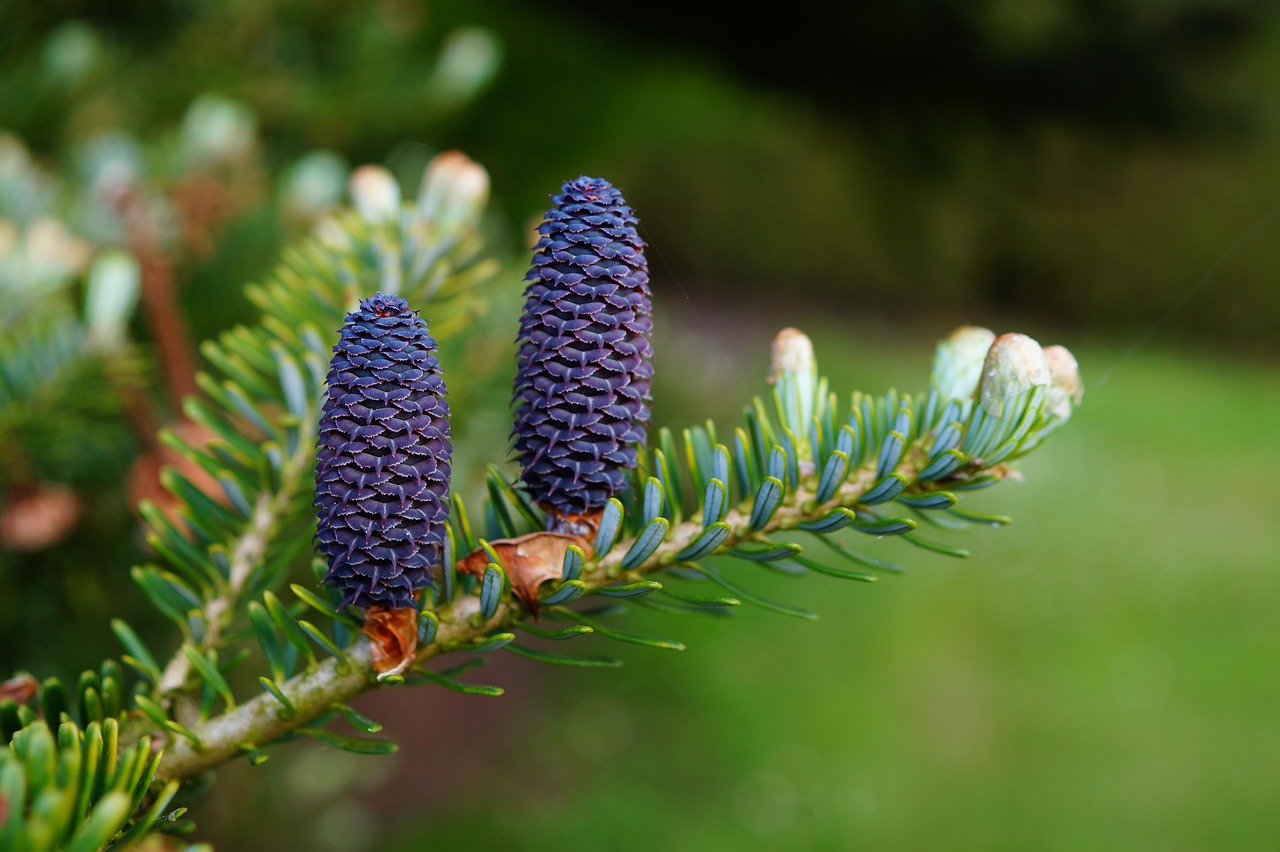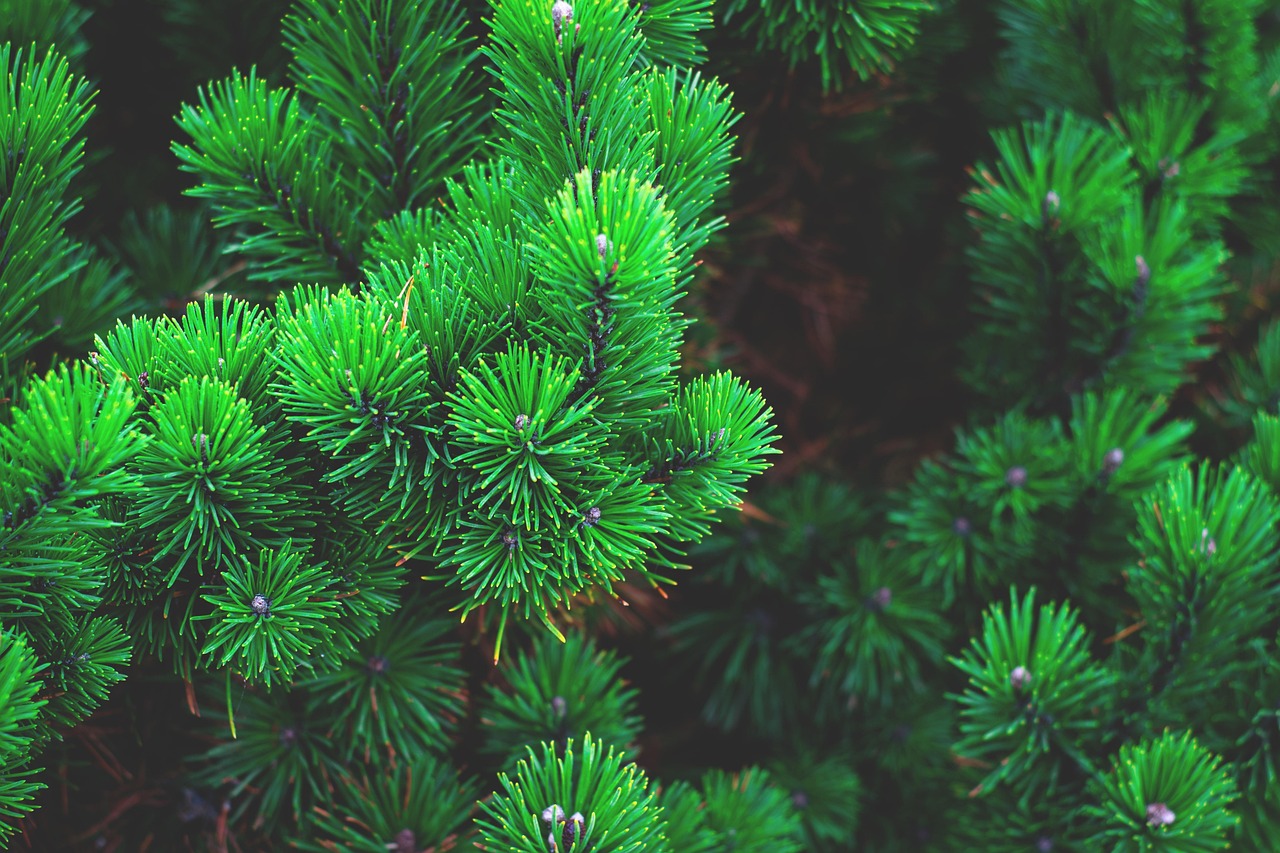Evergreen trees typically grow at varying rates depending on the species, environmental conditions, and care. On average, many evergreens can grow between 1 to 3 feet per year, providing effective privacy screens year-round.
When considering the use of evergreen trees for privacy, understanding their growth rate is crucial. Evergreens are popular for landscaping due to their ability to maintain foliage throughout the year. They offer a natural barrier against noise and visibility from neighboring properties. This quality makes them a preferred choice for homeowners seeking privacy.

Different species of evergreen trees exhibit distinct growth rates. Some may grow quickly, while others take time to reach their full height. Factors such as soil type, water availability, and climate play significant roles in determining how fast these trees will grow. For instance, a tree planted in rich, well-drained soil with adequate sunlight will generally thrive more than one in poor conditions.
Factors Influencing Evergreen Tree Growth Rates
Several factors influence how quickly evergreen trees grow. Below are some key considerations:
- Species: Different evergreen species naturally have different growth rates.
- Soil Quality: Nutrient-rich soil supports faster growth.
- Water Availability: Consistent watering enhances growth, especially during dry spells.
- Sunlight: Most evergreens require full or partial sunlight to thrive.
- Climate: The local climate affects overall health and growth rate.
Understanding these factors can help homeowners select the right species for their specific needs. Choosing a tree that matches the local environment can provide the best results for privacy screening.

Common Evergreen Species and Their Growth Rates
Here are some popular evergreen species along with their average growth rates:
| Evergreen Species | Average Growth Rate (feet/year) | Height at Maturity (feet) |
|---|---|---|
| Eastern White Pine | 2 to 3 | 50 to 80 |
| Northern Red Cedar | 1 to 2 | 30 to 50 |
| Leland Cypress | 3 to 4 | 30 to 40 |
| Norway Spruce | 2 to 3 | 40 to 60 |
| Ponderosa Pine | 1 to 2 | 60 to 100 |
This table highlights the diversity among evergreen species. Homeowners should consider both the growth rate and the eventual height of the tree when planning for privacy. A taller tree may be necessary for adequate coverage, while a fast-growing variety can quickly establish a barrier.
Caring for Evergreen Trees to Maximize Growth
Proper care is essential to ensure that evergreen trees grow at their optimal rate. Here are some tips for maintaining healthy evergreens:

- Watering: Regular watering is critical, especially during the first few years after planting.
- Fertilizing: Use balanced fertilizers to provide essential nutrients.
- Pruning: Prune dead or damaged branches to promote healthy growth.
- Pest Control: Monitor for pests and diseases that may hinder growth.
By taking these steps, homeowners can help their evergreen trees reach maturity more quickly. This proactive approach not only enhances growth rates but also contributes to the overall health of the trees.
Selecting and caring for evergreen trees wisely can lead to a lush, green privacy screen that lasts throughout the year. Understanding growth rates and species characteristics is key in making informed decisions for your landscape design.
Choosing the Right Evergreen Trees for Privacy
When selecting evergreen trees for privacy, it is essential to consider not only their growth rate but also their suitability for your specific environment. Factors such as climate, soil type, and available space can significantly influence your choice. Here are some key considerations to help guide your selection.
Climate Considerations
Different evergreen species thrive in various climates. Understanding your local climate conditions is crucial. Some trees are more tolerant of cold temperatures, while others prefer warmer environments. Here are a few examples:

- Cold Climate: Species like Eastern White Pine and Norway Spruce are well-suited for northern regions.
- Warm Climate: Leland Cypress and Southern Magnolia perform better in milder climates.
- Coastal Areas: Consider using Leyland Cypress or Italian Stone Pine, as they tolerate salty air.
Soil Type
The type of soil in your yard affects the growth of evergreen trees. Conducting a soil test can provide valuable insights into nutrient levels and pH balance. Here are types of soil and their compatibility with evergreen trees:
- Sandy Soil: Well-drained but low in nutrients; consider trees like Ponderosa Pine.
- Clay Soil: Retains moisture but can lead to root rot; Eastern Red Cedar may be a good option.
- Loamy Soil: Ideal for most evergreen species due to its balance of drainage and nutrients.
Spacing and Planting Techniques
Proper spacing is vital when planting evergreen trees for privacy. Trees planted too close together may compete for resources, leading to poor growth. Here are some guidelines for spacing:
- Fast-Growing Species: Space them 6 to 8 feet apart to allow for rapid growth.
- Slow-Growing Species: A spacing of 8 to 10 feet is advisable for these trees.
- Height Considerations: Taller trees should be planted further apart to prevent shading lower plants.
The planting technique also plays a role in tree growth. It is essential to dig a hole that is at least twice the width of the root ball but not deeper than the root ball itself. This technique promotes healthy root development.
Environmental Benefits of Evergreen Trees
In addition to providing privacy, evergreen trees offer numerous environmental benefits. These benefits can enhance the overall value of your property and contribute positively to the ecosystem.
- Air Quality Improvement: Evergreens absorb carbon dioxide and release oxygen, improving air quality.
- Noise Reduction: Dense evergreen foliage acts as a sound barrier, reducing noise pollution from nearby roads or neighbors.
- Wildlife Habitat: Many birds and small animals find shelter and food in evergreen trees, promoting biodiversity.
- Erosion Control: The root systems of evergreens help stabilize soil and prevent erosion on slopes and hillsides.
Maintenance Practices for Long-Term Health
Beyond initial planting and care, ongoing maintenance is critical for the long-term health of evergreen trees. Here are some important practices to consider:
Irrigation Management
Establishing a consistent watering schedule is essential, particularly during dry spells. Newly planted trees may require more frequent watering until they are established. Use mulch around the base of the tree to help retain moisture and regulate soil temperature.
Pest and Disease Monitoring
Pests such as aphids or spider mites can affect the health of evergreen trees. Regularly inspect your trees for signs of infestation or disease. Early detection can minimize damage and keep your trees healthy.
Seasonal Pruning
Pruning should be done annually to remove dead or diseased branches. This practice not only encourages healthy growth but also helps maintain the desired shape of the tree for optimal privacy coverage.
Cultivating Different Evergreen Varieties
Diversity among evergreen species can enhance your landscape’s aesthetic appeal while ensuring effective privacy solutions. Consider mixing different varieties to create a layered effect that adds depth and character.
- Tall Trees: Use tall species like Norway Spruce as the backbone of your privacy screen.
- Midsize Trees: Incorporate midsize varieties like Arborvitae for added texture.
- Low-Growing Varieties: Use ground cover evergreens such as Junipers at the base for a complete look.
This approach not only increases visual interest but also provides varying levels of coverage throughout the year, ensuring your privacy needs are consistently met.
Seasonal Care for Evergreen Trees
Evergreen trees require specific care throughout the seasons to maintain their health and ensure optimal growth. Understanding the unique needs of these trees during each season can help maximize their growth rates and maintain their aesthetic appeal.
Spring
Spring is a critical time for evergreen trees as they emerge from dormancy. Here are some important care tips for this season:
- Fertilization: Apply a balanced fertilizer in early spring to promote new growth. Organic options like compost can also provide essential nutrients.
- Watering: As the weather warms, ensure that the trees receive adequate moisture. Water deeply and regularly, especially if rainfall is insufficient.
- Weeding: Remove any weeds or competing vegetation around the base of the trees to reduce competition for nutrients and water.
Summer
During the summer months, evergreen trees may face heat stress. Proper care is essential to keep them healthy:
- Mulching: Apply a layer of mulch around the base of the trees to retain moisture and regulate soil temperature.
- Pruning: Conduct light pruning to remove any dead or damaged branches, ensuring the tree maintains a healthy shape.
- Pest Monitoring: Regularly check for pests and diseases that can affect growth. Early intervention can prevent significant damage.
Fall
As temperatures begin to cool in fall, evergreen trees prepare for dormancy. Here are some steps to take:
- Watering: Continue to water trees until the ground freezes. This helps establish roots before winter.
- Mulching: Add more mulch if necessary, as it provides insulation against cold temperatures.
- Soil Testing: Consider testing the soil again to determine nutrient levels heading into winter. Amend the soil as needed.
Winter
Winter can be harsh on evergreen trees, but proper care can enhance their resilience:
- Snow Removal: Gently brush off heavy snow accumulation from branches to prevent breakage.
- Wind Protection: If possible, create windbreaks using burlap or other materials to shield trees from harsh winds.
- Watering: During warm spells, check the soil moisture. If it is dry, water the trees if temperatures allow.
Common Challenges in Evergreen Tree Growth
Even with proper care, evergreen trees can face challenges that may affect their growth rate and overall health. Recognizing these issues early can help mitigate their impact.
Pest Infestation
Pests such as aphids, spider mites, and scale insects are common threats to evergreen trees. Signs of infestation include yellowing leaves, webbing, or sticky residue on foliage. Implementing integrated pest management strategies can help control these pests effectively.
Diseases
Fungal diseases like root rot and needle blight can severely impact evergreen health. Symptoms may include discolored needles or wilting branches. It’s essential to maintain good air circulation and avoid overwatering to minimize disease risk.
Nutrient Deficiencies
A lack of essential nutrients can stunt growth and lead to poor tree health. Common signs of deficiency include yellowing leaves and stunted growth. Conducting regular soil tests can help identify nutrient imbalances, allowing for timely amendments.
The Role of Evergreen Trees in Landscape Design
Incorporating evergreen trees into your landscape design not only provides privacy but also enhances visual appeal and structure. Here are some design principles to consider:
Layered Planting
Create depth in your landscape by planting evergreens in layers. Position taller species at the back and shorter varieties in front. This arrangement allows for a full view of different textures and colors.
Seasonal Interest
Select species with varying foliage colors and textures to maintain interest throughout the year. Some evergreens have unique bark or seasonal color changes that add character to your landscape.
Sustainable Landscaping
Evergreen trees contribute to sustainable landscaping efforts by providing habitat for wildlife, improving air quality, and reducing energy costs through shade. Choosing native species can further enhance sustainability by supporting local ecosystems.
Using Evergreen Trees for Noise Reduction
Apart from privacy, evergreen trees are effective in reducing noise pollution. Their dense foliage absorbs sound, creating a quieter outdoor environment. Here’s how to maximize their effectiveness:
- Select Dense Species: Choosing species with thick foliage will provide better sound insulation.
- Create a Barrier: Plant a row of evergreens along property lines where noise is a concern.
- Add Layers: Incorporate multiple layers of plants to enhance sound absorption further.
This strategic planting not only improves privacy but also contributes to a peaceful outdoor living space. Understanding the multifaceted benefits of evergreen trees allows homeowners to make informed decisions when designing their landscapes.
Additional Considerations for Evergreen Tree Selection
Choosing the right evergreen tree species for your landscape involves more than just considering growth rates and environmental factors. There are additional aspects that can influence your decision, ensuring that the trees you select will thrive in your specific conditions.
Local Regulations and Guidelines
Before planting, check local zoning laws or homeowners’ association guidelines regarding tree planting. Some communities have specific regulations regarding the height and type of trees that can be planted, especially near property lines. Understanding these regulations can help avoid future conflicts with neighbors or local authorities.
Environmental Impact
When selecting evergreen trees, consider the environmental impact of the species you choose. Native species typically require less water and maintenance than non-native varieties. They also provide better support for local wildlife, contributing positively to the ecosystem.
Aesthetic Preferences
The visual appeal of evergreens varies greatly between species. Some trees have a classic conical shape, while others may have a more irregular form. When designing your landscape, keep in mind:
- Color Variations: Some evergreens have vibrant foliage colors that can enhance visual interest.
- Texture: Different species offer various textures, from soft needles to stiff branches, adding diversity to your landscape.
- Seasonal Changes: Certain species may change color with the seasons, providing year-round visual appeal.
Organic Practices for Maintaining Evergreen Health
Incorporating organic practices into the care of evergreen trees can lead to healthier growth and improved environmental conditions. Here are some organic methods that can be beneficial:
- Compost: Use compost as a natural fertilizer to improve soil health and provide essential nutrients.
- Natural Pest Control: Introduce beneficial insects to control pest populations without chemical pesticides.
- Native Plants: Plant native ground cover around evergreens to create a symbiotic relationship that supports both the trees and local wildlife.
Adopting these organic practices not only supports the trees’ growth but also promotes a healthier environment for other plants and wildlife in your landscape.
The Future of Evergreen Landscaping
The trend toward using evergreen trees in landscaping for privacy and environmental benefits is likely to continue growing. As homeowners become more aware of the ecological advantages, the demand for sustainable landscaping practices will increase. This shift may include:
- Sustainable Sourcing: More nurseries will focus on selling locally sourced and native tree species.
- Innovative Design: Landscape architects will increasingly incorporate evergreens into designs that prioritize biodiversity and sustainability.
- Community Engagement: Neighborhood initiatives may promote tree planting as a way to enhance community spaces and improve air quality.
Conclusion
Evergreen trees offer an array of benefits beyond privacy, including noise reduction, aesthetic appeal, and environmental contributions. When selecting evergreens for your landscape, it is essential to consider factors such as growth rates, environmental conditions, and local regulations. By choosing the right species and implementing proper care practices, homeowners can create lush, green spaces that provide year-round privacy while supporting local ecosystems.
The thoughtful integration of evergreen trees into your landscape not only enhances your property but also contributes positively to the surrounding environment. As trends shift towards more sustainable practices, embracing these green solutions can lead to healthier, more vibrant outdoor spaces that benefit both people and nature alike.
